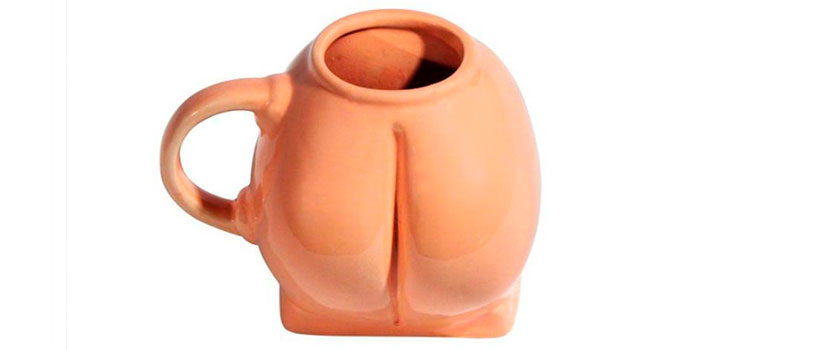HERE’S WHAT YOU GET (MAYBE) WHEN YOU GO LOCO FOR LUXURY
James Durston
In a cage, in a forest, in the center of Bali, Indonesia, something resembling a cat-raccoon hybrid scratches and snuffles through piles of fresh red coffee beans.
Next to the cage are a dozen small cups of hot, dark liquid–coffee that’s been “processed” (eaten and pooped out) by the civet, before being roasted, ground and served.
This is “kopi luwak”–or civet crap coffee, to you and me. I’m seeing and tasting it on site, surrounded by jungle smells and sounds, part of a trip arranged by travel operators in Bali specifically to see this product in its native habitat.
But for a few years it has been exported, and at up to $80 for a cup in the US, it is one of the world’s most expensive, and bizarre, luxury coffee items.
There are ethical reasons for not buying this crap–first and foremost, it’s cruel to civets. I would argue it’s cruel to humans, too. Nothing that touched (or especially came out of) something else’s back end should be going anywhere near your mouth.
But more important, how did something that sounds like a frat-house initiation challenge become a deluxe delicacy?
“Ridiculuxe” items and experiences have proliferated in recent years, as high-end travel and hospitality companies try to find ways to stand apart.
Take water. A staple that rains from the sky. A drink you can slurp out of most rivers or the nearest faucet. There’s no way you’d be able to make this stuff a deluxe, elitist, item, right?
The people at Berg did. These Newfoundlanders melt down icebergs before sticking the meltwater into fancy bottles.
There are now so many luxury water brands that “water tasting competitions” actually take place. In some restaurants “water sommeliers” hand you a water list alongside the wine list, some bottles of which cost $50.
And truffles. Yes, they’re rare. Yes, some people think they smell good. But do a couple of tiny, thin, scrawny shavings really warrant my pizza’s price hijacked to $35?
And that’s just the food. Ridiculuxe experiences can now be found in all sorts of niches. Undersea hotel suites. A full-on double bedroom on a plane. The $1 million, two-year holiday that takes in every UNESCO heritage site in the world. OK, that last thing, I’d love to do. But it’s still ridiculuxe.
“There’s a fine line between adding meaning to a trip and being extravagant just for the sake of it,” says Andrea Oschetti, founder and CEO at Blueflower Travel Company, which puts together bespoke travel experiences.
He takes me up on my truffleist attitude, describing his Piedmont experience in Italy as one that gets underneath the truffle, which is essentially the glamorous poster-child of this region. “If you just focus on the truffles and Michelin-starred restaurants, you would have missed what Piedmont is about,” he says. “One of the key essences of Piedmont is Slow Food, so our trip is about enjoying a variety of lunches and dinners, each with a different spirit. Some of them with expensive truffles and wines, because they are part of what Piedmont is about too, but not exclusively.
“The focus of a trip to Piedmont should be a journey of rediscovery and revival of your primordial senses of smell and taste, to access the greatest people and places outside the tourist routes, to experience Italy at its most authentic.”
Apply the same philosophy to Berg’s water and you could, perhaps, at a real stretch, justify full travel itineraries to the Arctic, to see the icebergs pillaged by Berg, to taste the water in situ. But the difference is key: a trip inspired by a product, rather than a product that is just one part of your trip.
The question we really need to ask is: Where does it end? And where is that fine line?
For Oschetti, it’s simple: “Are these new experiences helping to connect with the pure essence of a destination, the genius loci, and engaging with inspiring locals? This is the essence of travel. If the answer is no, we label the experience foolish.”
I suspect marketing pros would profit to differ, however.
Already there’s a far bigger, more outrageous, more socially shareable defecated (not decaffeinated) coffee product available. The newest braggart’s delight: elephant dung coffee from Thailand.
I can just see the t-shirts: “Don’t civet, trumpet.”
James Durston is a writer and editor living in Hong Kong, via India, the UK and East Africa. He has written about finance, food & drink, and previously was homepage editor for CNNTravel. Read more about him at www.jamesdurston.com.


